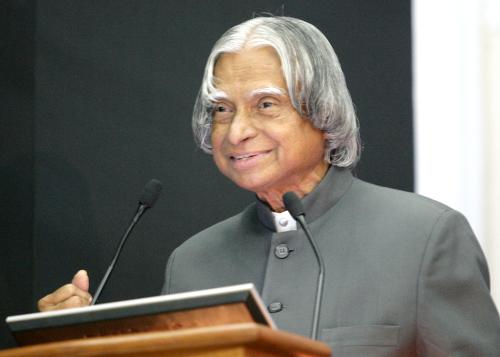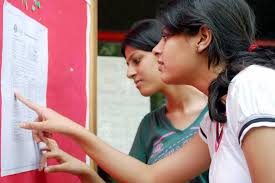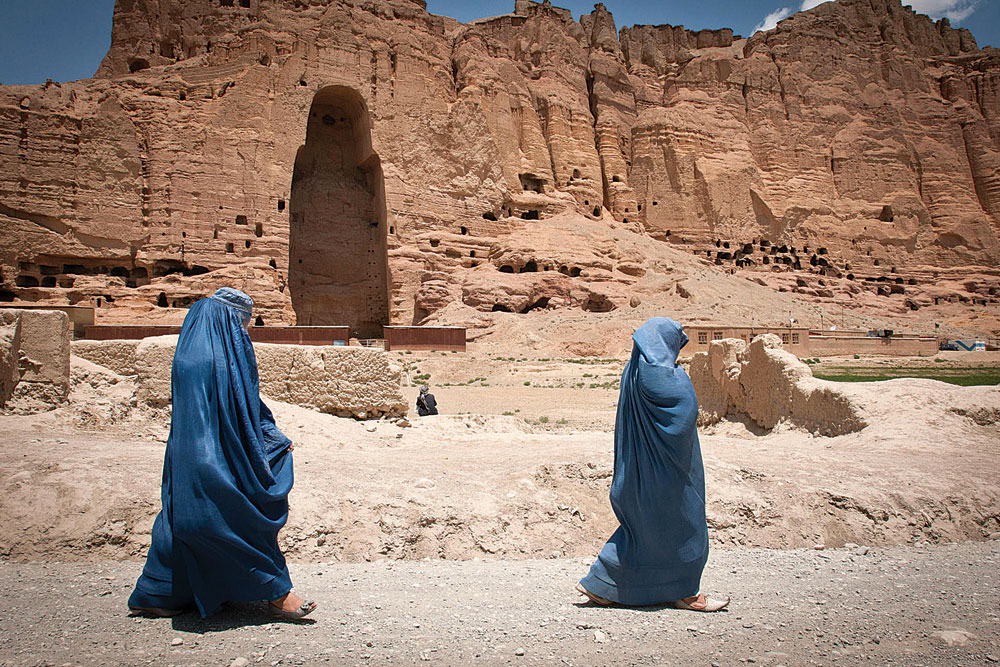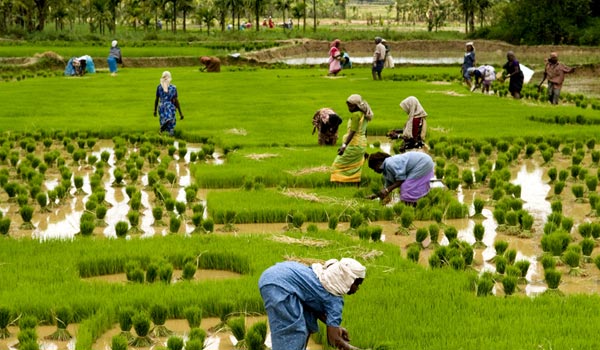“Never allow failure to become your captain”

Dr. APJ Abdul Kalam
Sekhar S J
“We therefore have a dream. Our dream is that both the Houses of our Parliament would adopt a resolution for the second vision of a great nation: ‘India will transform into a developed nation before the year 2020’. A billion people are our resource for this national transformation.”
For former President A.P.J. Abdul Kalam, becoming a fighter pilot was a “dearest dream” but he failed to realise it by a whisker as he bagged the ninth position when only eight slots were available in the IAF.
In his book “My Journey: Transforming Dreams into Actions”, Mr. Kalam, who specialised in aeronautical engineering from Madras Institute of Technology, says he was desperate to pursue a career in flying.
“Over the years I had nurtured the hope to be able to fly to handle a machine as it rose higher and higher in the stratosphere was my dearest dream,” he writes.
Out of the two interview calls Mr. Kalam got, one was from the Indian Air Force in Dehradun and the other from the Directorate of Technical Development and Production (DTDP) at the Ministry of Defence in Delhi.
While the interview at DTDP was “easy” he recounted that for the Air Force Selection Board, he realised that along with qualifications and engineering knowledge, they were also looking for a certain kind of “smartness” in the candidate.
Mr. Kalam bagged the ninth position out of 25 candidates and was not recruited as only eight slots were available.
“I had failed to realise my dream of becoming an air force pilot,” he remembers.
He says, he “walked around for a while till I reached the edge of a cliff” before deciding to go to Rishikesh and “seek a new way forward.”
“It is only when we are faced with failure do we realise that these resources were always there within us. We only need to find them and move on with our lives,” says Dr. Kalam who went on to put his “heart and soul” at his job as the senior scientific assistant at DTDP.
His book is filled with stories of “innumerable challenges and learning” in his years as the scientific adviser when India conducted its second nuclear test, his retirement and dedication to teaching thereafter and his years as President.
He recounts “staring into the pit of despair” when he failed to make it as an IAF pilot and how he pulled himself up and rose to become the man who headed India’s missile programme and occupy highest office in the country.
While the 84-year-old, popularly known as the Missile Man for his contribution to the development of ballistic missile technology, had in 1999 brought out his autobiography “Wings of Fire” and followed it with “Turning Points”, a journey through challenges” in 2012 that details his political career and challenges.
APJ recollects his experience of , his early working life as a newspaper boy at the age of eight.
“I used to go to Rameswaram Road Railway station, three kilometers away to collect newspaper. Madras Dhanushkodi Mail will pass through the station but will not stop, since it was war time. The newspaper bundle will be thrown from the running train to the platform. I used to collect the paper and run around the Rameswaram town and be the first one to distribute the newspapers in the town”.
The former President says that true nation building is not made by political rhetoric alone but should be backed “by the power of sacrifice, toil and virtue”.
“When grand plans for scientific and defence technologies are made, do the people in power think about the sacrifices the people in the laboratories and fields have to make?” he says.
Poetry, says Dr. Kalam, has been “one of his first loves” and poems by T.S. Elliot, Lewis Carroll and William Butler Yeats has “played out in me over and over again”.
Dr. Kalam says his life can be summed up as “Love poured to the child… struggle… more struggle… bitter tears… then sweet tears… and finally a life as beautiful and fulfilling as seeing the birth of the full moon.
“I hope these stories will help all my readers understand their dreams and compel them to work on these dreams that keep them awake,” he writes.
Q.Would it be correct to say that every book of yours is, in a sense, an autobiography?
Dr. Kalam: My experiences are somehow integrated with people’s experiences. For me there are two types of people: The young and the experienced. So, you will find that in every book, I have narrated certain experiences from my life. Thousands of people have written to tell me how Wings of Fire, Ignited Minds and Indomitable Spirit have touched their hearts and made a difference in their lives. That is the greatest satisfaction for me.
Q. Which is the experience you would consider the most negative you have written about?
Dr. Kalam: For me, there is no such thing as a negative experience. But I have faced problems. Two instances come to mind. My first experience of professional failure occurred in 1979, when a satellite carrier failed to launch. But I never allowed failure to become my captain. I also learned from observing some remarkable people. Instead of blaming me, my boss at the time accepted the entire responsibility for the failure of the project in front of 120 media persons. When I succeeded the next year, he did not take the credit and instead asked me to address a press conference. That leadership quality-in failure, having the ability to take the blame for your team, and sharing in their success is a lesson I learned very early in life.
Years later, when I became President and was presented the Office of Profit Bill, I felt there was a problem. I asked Parliament to reconsider. Of course there was a lot of controversy regarding my stance… a Standing Committee had to be set up to study the matter, but I stuck to my beliefs.
Q. Your thoughts about a leadership?
Dr. Kalam: Yes, leadership counts. A leader must be a visionary, a missionary. He is not afraid of any problem, does not follow anyone but makes his own path. Where matters of the country were concerned, work would go on. Nation is bigger than political party.
Q. There is a famous story that you were blessed by Swami Sivananda in your youth.
Dr. Kalam: As a child I wanted to be a pilot. So when I grew up, I applied to the Indian Air Force and was called for an interview to Dehradun. For 10 days I was put through a series of gruelling tests and then I found out I had failed the medical test. Despondent, I left Dehradun and on the banks of the Ganga, I saw Swami Sivananda surrounded by thousands of devotees. I sat in the last row. A little later he beckoned me and a French tourist and blessed us and gave us vishwaroopam, what Lord Krishna gave Arjun to dispel all his fears. When I returned to Delhi, a job was waiting for me: Senior scientific adviser in the Ministry of Defence.
Q. In the book, you mention that you do the morning namaaz.
Dr. Kalam: Yes, every day, whenever possible. My father was very strict about namaaz and would wake me up at 4 a.m. and take me to the mosque. I also fast.
Q. So why is it that the so-called Muslim leaders in the North always have the feeling that you are not a practising Muslim?
Dr. Kalam: First of all, I am an Indian and try to be a good human being. People can call me XYZ, that’s their freedom of expression. There is no conflict of any kind regarding my faith in Islam. I often visit temples and churches as well. God is everywhere.
Q. Your favourite reads?
Dr. Kalam: Some of my favourite books are — Light from Many Lamps: A Treasury of Inspiration by Lillian Eichler Watson, Empires of the Mind: Lessons to Lead and Succeed In a Knowledge-Based World by Denis Waitley, Everyday Greatness by Stephen R Covey and David K Hatch, Medicine and Compassion by Chief Monk Choakyi Nyima Rinpoche and Dr David R Shlim, and Tiya by Samarpan.
Q. You inspire many, but who’s it that you are inspired by?
My inspiration is my science teacher in school, Shri Sivasubramania Iyer, who taught me when I was in 8th standard at the age of 13. He was one of the very good teachers in our school. All of us loved to attend his class and hear him. One day he was teaching about bird’s flight. He drew a diagram of a bird on the blackboard depicting the wings, tail and the body structure with the head. He explained how the birds create the lift and fly. He also explained to us how they change direction while flying. Nearly 25 minutes he gave the lecture with various information such as lift, drag and how the birds fly in a formation of 10, 20 or 30 etc. At the end of the class, he wanted to know whether we understood how the birds fly. I said I did not understand how the birds fly. When I said this, he asked the other students whether they understood or not. Many students said that they did not understand. Our teacher was a real teacher and very good teacher. He did not get upset by our response. Shri Sivasubramania Iyer was an example for shaping not just students but igniting the youth both average and extraordinary by allowing them to ask questions and answering them till they fully understood.
Q. You began your career with ISRO?
Dr. Kalam: I started my career in the VSSC, Thiruvananthapuram and worked there for nearly 20 years – from 1962 to 1982. One of the major projects I was assigned then was to design, develop and build a satellite launch vehicle called SLV-3 to put the Rohini satellite into low earth orbit. This was India’s first satellite. I had a fantastic team. What we learnt when I put the satellite successfully into orbit in July 1980 was that in any task we do, the mission is greater than the individuals and organisations.
Q. You, along with Rajan, have written the book India 2020, A Vision for the New Millennium. What motivated you to write that book?
Dr. Kalam: India had a great vision, the seeds of which were sown in 1857. It was that India needed freedom. That was a vision for the nation. It took 90 years of hard work by the best of our leaders to achieve that freedom. Now we need a second vision for the nation. The second vision is brought out in the book: to make India a developed nation. India has many, many attributes. One is the large size of its economy. Several aspects of national security, self-reliance in them; then economic security, food security; also many other social indicators relating to the well-being of the people, their health care, their nutritional security and so on. Many of these are discussed in the book with illustrative examples.
Another thing that Dr. Kalam has mentioned is the strength of our country. India is one of the few countries which can generate a massive amount of information from its institutes, experts and industries. Dr. Kalam went to several places. He has delivered lectures in educational institutions, industries and so on. “One thing that emerges everywhere is that there is an urge”. He says “At the end of one of lectures, a young girl came to me for autograph. She was 10 years old.
I asked her, “Young lady, “What is your goal? What is your dream?”
She quickly answered, “I want to live in a developed India.” The book India 2020 is dedicated to her and several thousands of youth who, like her, should dream to be in a developed India.
Q. In your book, you explain how Tipu Sultan used rockets in the two battles of Seringapattam and how you wanted to see them displayed at the Rotunda Museum at Woolwich, near London. You have pointed out that it was the first ever military use of rockets anywhere in the world, and that the British studied these rockets and improved upon them for use in their battles in Europe. How did we fail to build upon the foundation of rocketry laid by Tipu? Robert Goddard in the United States, Konstantin Tsiolkovsky in Russia and William Congreve in England laid the foundations for rocketry in those countries. We missed the bus, in the case of Industrial Revolution too.
DR. Kalam: In Tipu’s time, the world’s first war rocket was built and used. In the first battle, the British were defeated. In the second, Tipu was defeated. So we had the ‘rocket sense’. We had the capability to make a rocket towards the end of the 18th century. In the 1960s, the rocket technology received a big thrust through Professor Vikram Sarabhai at the Space Department and through Dr. Nag Chaudhri at the Defence (Department). These two persons propelled the rocket technology in India, one for space and another for defence.
Q. India has declared itself a nuclear weapon state. You are the father of the Integrated Guided Missile Development Programme. Unless it converts technology into missiles, aircraft delivery systems and warheads, can it declare itself a nuclear weapon state?
Dr. Kalam: Missiles can carry any type of weapons. It can carry a conventional weapon, a nuclear weapon. It is only a set of weight, size and performance requirements that will decide… As far as a missile is concerned, it is designed to carry any type of warheads. So when India is called a nuclear weapon state, it means it has a carrier. An aircraft can be a carrier or a missile can be a carrier.
Dr. In fact, Jawaharlal Nehru was one of the first to propound the CTBT. Later, India changed its mind…
Dr. Kalam: We have always been consistent. From Nehru’s time, we advocated total disarmament. Total. We said we don’t want five countries to have nuclear weapons when other countries don’t have them. There should not be any discrimination. This policy has continued from (the time of) Nehru.
Q. In your book, you have said that India’s “…young people are prepared to rough it out. That is where our hope lies for the realisation of the Second Vision.” In the 1960s and 1970s, students and youth took part in political movements with great enthusiasm – in the Nav Nirman movement led by Jayaprakash Narayan, for instance. But in the 1980s and 1990s students and youth did not take part in any such major movement and they do not seem to be interested in social and political issues and developments. Is this because the students have become grossly career-oriented?
Dr. Kalam: My view is that if you have a vision that India should become a developed country, it penetrates all minds. This urge to become a developed India is a vision that is greater than any group of people or any group of States. Everybody wants a vision driven by a mission and a goal. That is why we call it a second vision for the nation – of transforming India into a developed India. Once the vision comes, everybody feels that we have to be a developed India, a prosperous India. Then the tendency (on the part of the youth) of not participating in movements – it is because there is no programme that is greater than individuals or groups – will vanish. So, the vision is one of the biggest elements that will trigger young minds.
Q. You have stated in the book that India is rich in bio-resources and that “If only we could capture the wealth of these biological resources through the assiduous application of technology, we could easily become an economic power to reckon with.” How do we marry these two, resources and technology?
Dr. Kalam: If you have noticed, natural products such as turmeric, neem, tamarind and herbal products are increasingly used these days. What does this mean? You take what is considered ancient (traditional) items and apply to them newer knowledge and technology. This is not confined to four or five items I mentioned but to many other living things and plants. The reason why people prefer natural products is that they tend to be cleaner. Unless you use the best of modern technologies, biotechnology, instrumentation, advanced sensors, modern processing methods and so on, all that is the best in these natural products cannot be brought out. That requires a lot of technology. So these two get married, synergised to reach a newer dimension in many products, whether they are pesticides, new medicines, new chemical processes and so on…India is rich in these resources. India has good competence in core technologies. Marry these together and you can create great wealth.
Q. What do you see as economic security?
Dr. Kalam: Developed India needs three important tools or three important systems. One is a strong economy. It should be one of, say, four or five (top) nations in economic strength. You can call it economic security linked to food security. The second one is a self-reliant national security system. And the third, India should have a standing in the world. For a developing India, all these three will not be there. Economically, you are not a strong nation. For national security, you have to depend on somebody else. The third is, you have no standing in the world as an important power.
Q. Any message for the youth?
Dr. APJ: First, be unique. Second, remember that the 21st century India requires you to ‘work with integrity and succeed with integrity’. Third, the spirit of ‘What Can I Give’ shall replace the attitude of ‘What Can I Take’ — which is what causes greed, leading to problems like corruption, environmental degradation and moral turpitude.
Q. What’s next?
Dr. Kalam: I keep writing to express my thoughts on how to realise an economically developed India by 2020 and how to ignite the youth.





